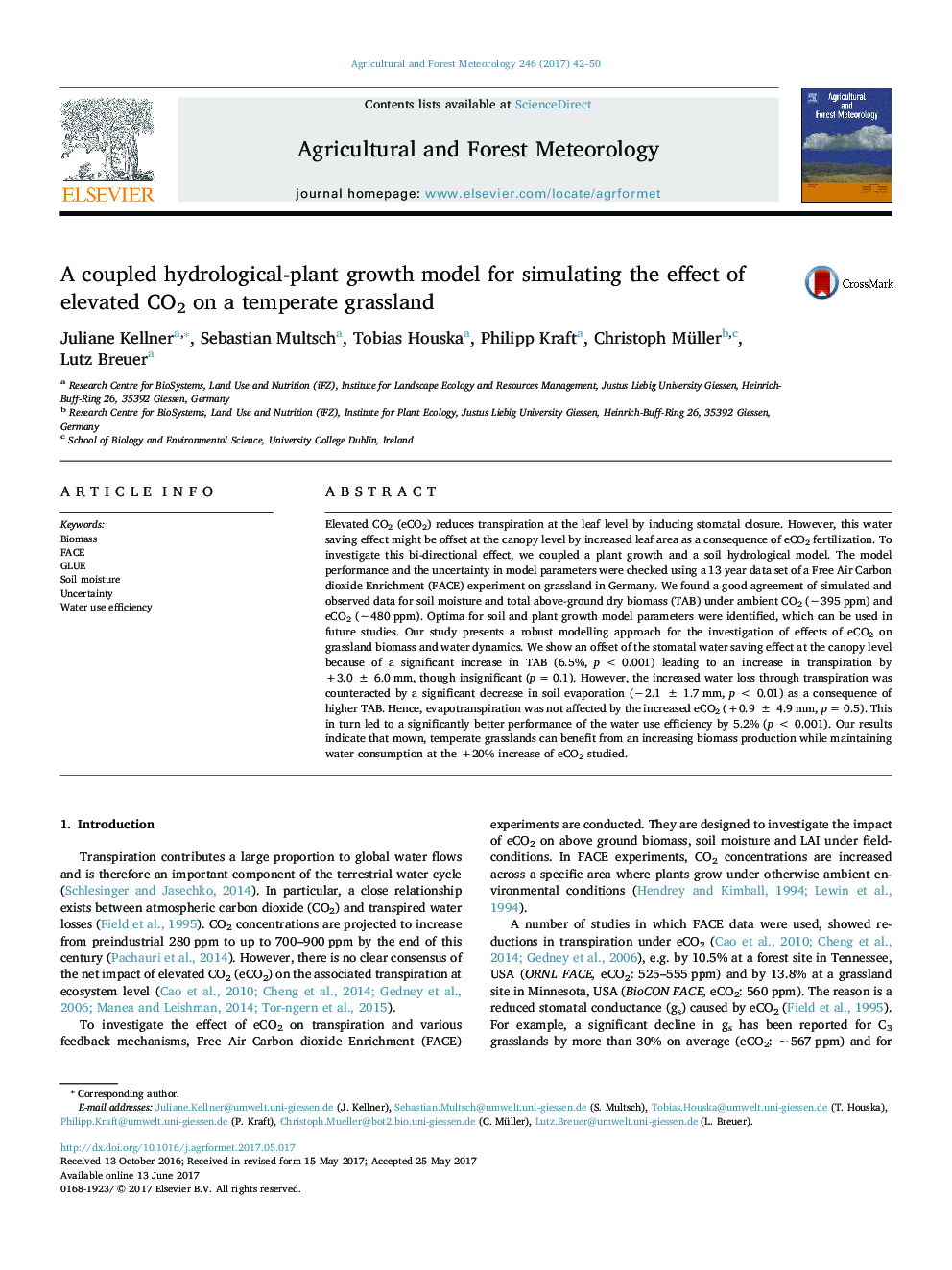| کد مقاله | کد نشریه | سال انتشار | مقاله انگلیسی | نسخه تمام متن |
|---|---|---|---|---|
| 6457689 | 1420855 | 2017 | 9 صفحه PDF | دانلود رایگان |

- Model testing with long-term data of a Free Air Carbon dioxide Enrichment (FACE) experiment on temperate grassland.
- Simulated increase in transpiration, but decrease in evaporation, leading to an overall constant evapotranspiration under elevated CO2.
- Improved water use efficiency for a temperate grassland under 20%-increased CO2.
Elevated CO2 (eCO2) reduces transpiration at the leaf level by inducing stomatal closure. However, this water saving effect might be offset at the canopy level by increased leaf area as a consequence of eCO2 fertilization. To investigate this bi-directional effect, we coupled a plant growth and a soil hydrological model. The model performance and the uncertainty in model parameters were checked using a 13 year data set of a Free Air Carbon dioxide Enrichment (FACE) experiment on grassland in Germany. We found a good agreement of simulated and observed data for soil moisture and total above-ground dry biomass (TAB) under ambient CO2 (â¼395 ppm) and eCO2 (â¼480 ppm). Optima for soil and plant growth model parameters were identified, which can be used in future studies. Our study presents a robust modelling approach for the investigation of effects of eCO2 on grassland biomass and water dynamics. We show an offset of the stomatal water saving effect at the canopy level because of a significant increase in TAB (6.5%, p < 0.001) leading to an increase in transpiration by +3.0 ± 6.0 mm, though insignificant (p = 0.1). However, the increased water loss through transpiration was counteracted by a significant decrease in soil evaporation (â2.1 ± 1.7 mm, p < 0.01) as a consequence of higher TAB. Hence, evapotranspiration was not affected by the increased eCO2 (+0.9 ± 4.9 mm, p = 0.5). This in turn led to a significantly better performance of the water use efficiency by 5.2% (p < 0.001). Our results indicate that mown, temperate grasslands can benefit from an increasing biomass production while maintaining water consumption at the +20% increase of eCO2 studied.
Journal: Agricultural and Forest Meteorology - Volume 246, 15 November 2017, Pages 42-50